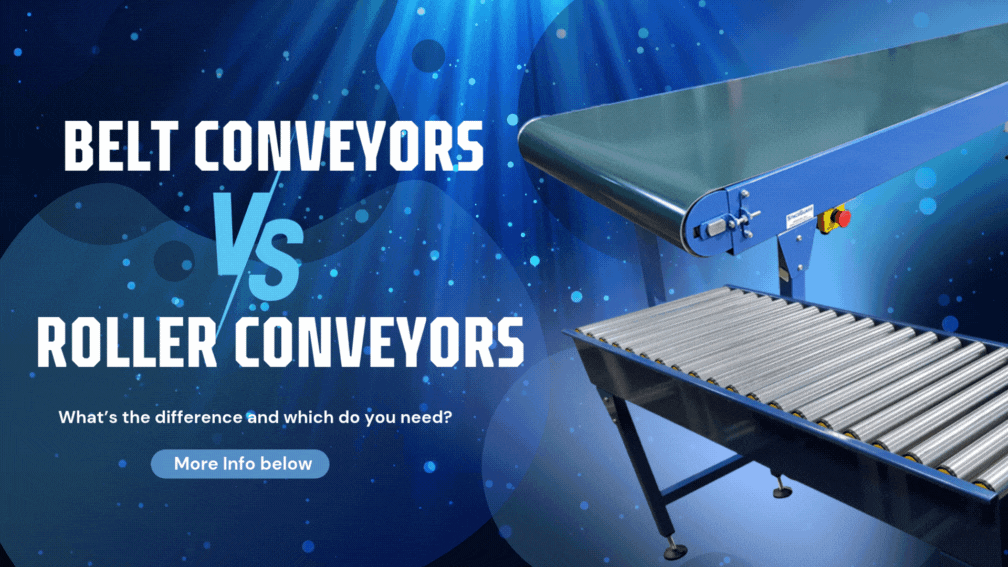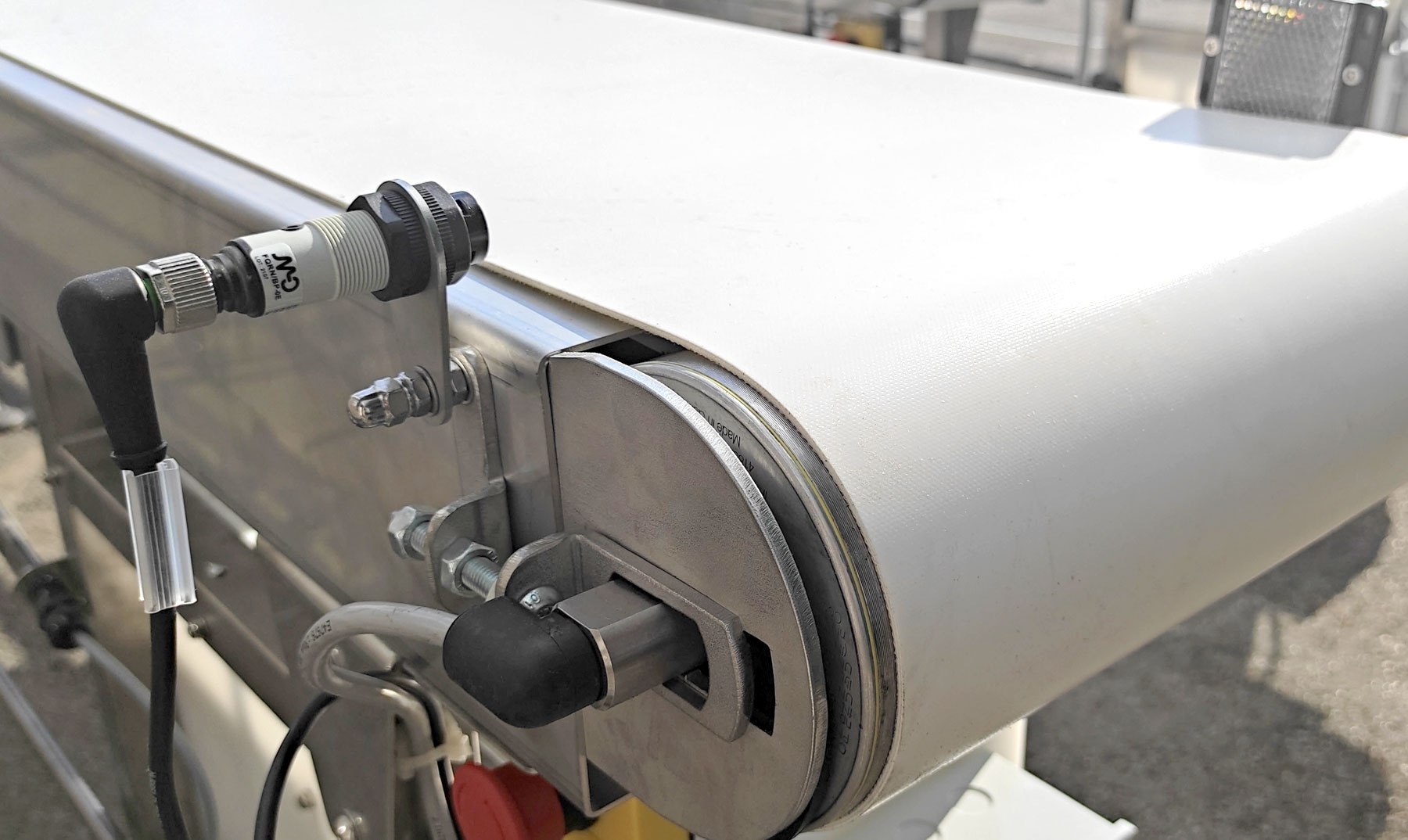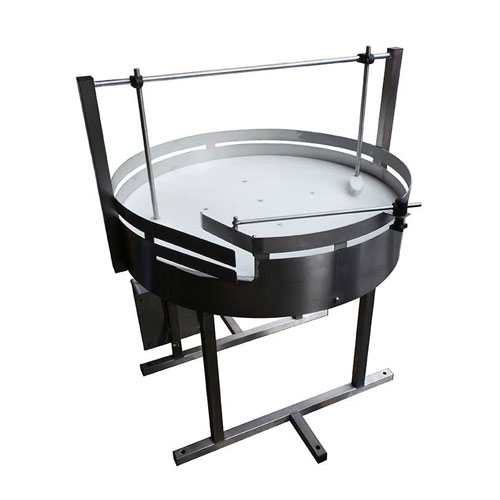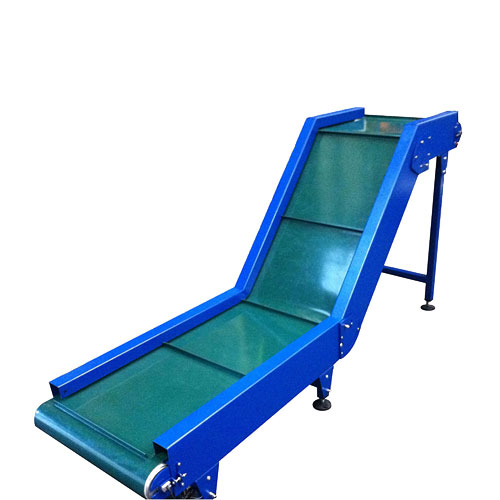
Belt vs roller conveyors is one of the most common questions when purchasing a conveyor, even if it's not your first time. Selecting the right conveyor system is critical for material handling, reducing labour, and ensuring long-term efficiency. Two of the most common types—belt conveyors and roller conveyors—each offer unique advantages depending on your products and processes. In this guide, we’ll compare the key benefits of each system and introduce additional options like modular belt, slat, and gravity conveyors to help you build a tailored solution for your facility.
What to Consider When Choosing a Conveyor
Every conveyor project should start with one essential question:
What are you moving, and how do you need it to move?
The best conveyor system aligns with your:
-
Product shape, weight, and size
-
Required speed and throughput
-
Space constraints
-
Need for accumulation, elevation, or sorting
-
Budget and maintenance capabilities
So, let's get into the 'belt vs roller conveyors' information to help you decide which is the best choice for you.
Belt Conveyors – Continuous Support for Varied Loads
Belt conveyor systems are ideal for transporting irregular, delicate, or small items that cannot span across rollers. With a smooth, continuous belt surface, they ensure consistent movement without gaps.
Advantages of Belt Conveyors
-
Handles loose items, packets, and unboxed products
-
Quiet operation with few moving parts
-
Excellent for assembly lines, packing stations, and operator-fed systems
-
Available in PVC, PU, rubber, or fabric finishes, depending on the application
-
Easy to integrate with weighing, labeling, or scanning equipment
Things to Watch
-
Belt tracking may require adjustment, especially under lateral pressure
-
Belts can stretch under heavy loads over time
-
Not designed for product accumulation without motorised zones or stop gates
Driven Roller Conveyors – Modular, Reliable & Expandable
Powered roller conveyors (also known as driven or motorised roller conveyors) use rotating rollers to move products with flat, stable bottoms like boxes or totes. They’re modular, scalable, and perfect for fast-paced operations.
Advantages of Roller Conveyors
-
Great for box handling, sortation, and merging tasks
-
Easy to reconfigure or expand
-
Compatible with low-pressure accumulation and zero-pressure control
-
Options include lineshaft, chain-driven, and 24v motorised rollers
💡 24V DC Systems
Modern 24v driven roller conveyors offer energy-efficient, whisper-quiet operation with precise control. Perfect for automated lines, they reduce energy costs and eliminate the need for pneumatics.
Types of Roller Conveyors
Gravity Roller Conveyors – Simple, Cost-Effective Transport
If you need a no-frills solution for light to medium loads, gravity roller conveyors are a dependable choice. They require no power, making them ideal for loading/unloading zones or packaging areas where slope or manual push is sufficient.
✅ Advantages
-
Zero energy consumption
-
Low maintenance
-
Ideal for temporary or flexible layouts
-
Excellent for returns, inspection, or end-of-line processes
Modular Belt Conveyors – Hygienic & High-Performance
Modular belt conveyors use plastic chain-link belts that snap together for durability and easy cleaning. Widely used in food, pharma, and automotive industries, these systems offer superior drainage and product stability.
✅ Advantages
-
Food-safe, wash-down friendly design
-
Handles curves, inclines, and product transfer well
-
Available in flame-retardant, anti-static, or UV-stable materials
-
Reduced risk of slippage due to textured surfaces
Slat Conveyors – Ideal for Heavy or Delicate Items
Slat conveyors use interlocking slats made of steel, plastic, or wood to move heavy, sharp, or hot products. Common in manufacturing, machining, and assembly, they’re robust and easy to clean.
✅ Advantages
-
Machine-fed production lines
-
Sharp or hot products that may damage belts
-
Custom fixtures for fixture-based conveyance
Rotary Tables – Smooth, Circular Product Handling
Rotary packing tables (also known as lazy susans or accumulation tables) offer temporary accumulation or manual loading/unloading for packed goods. Ideal for bottling or filling lines, they increase efficiency without the need for linear space.
✅ Advantages
-
End-of-line sorting or buffering
-
Integration with packing stations
-
Manual inspection or quality control
Mezzanine Floor to Floor Conveyors – Utilise Your Space
Mezzanine conveyors transport goods between floor levels efficiently, maximising vertical space. Often used in warehouses or multi-level operations, these systems improve order picking and inventory movement.
✅ Advantages
-
Incline belt conveyors
-
Powered roller incline systems
-
Spiral conveyors for high-throughput vertical movement
Incline & Decline Conveyors – Control Product Elevation
When your layout requires elevation changes, incline conveyors handle the job without compromising speed or safety. Available with belts, rollers, or modular links depending on product type.
✅ Advantages
-
Moving goods to mezzanine floors
-
Bridging workstations or loading bays
-
Keeping product flow consistent across height changes
Need Help Choosing the Right Conveyor? We’ve Got You Covered.
If our 'Belt vs Roller Conveyors' post couldn't help your with your choice consider getting in touch with us, we are happy to help!
At Conveyor Systems ltd, we design and manufacture bespoke conveyor systems built for your exact needs. Whether you’re after a belt conveyor for delicate items, a roller conveyor for box handling, or a complete integrated system with rotary tables and mezzanine lifts, we’ll deliver a solution that’s durable, efficient, and cost-effective.
If you require more information or would like to enquire about a custom conveyor, please use our contact form.
If you would like a discussion, you can contact our experts directly via email: sales@conveyorsystems.co.uk or call: 01482 363445
Explore more articles about conveyors and workplace equipment here!











